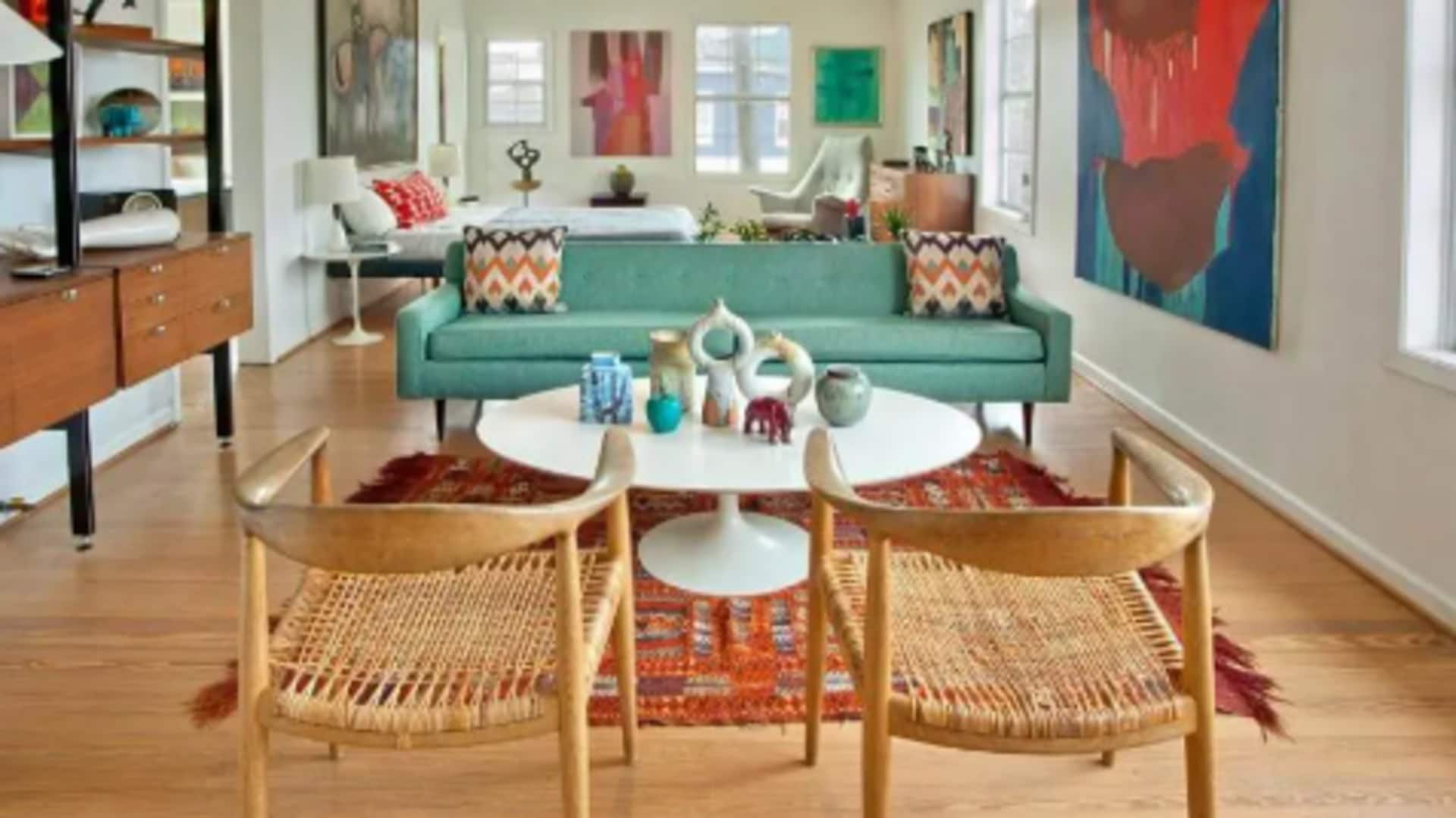
Transform your space with mid-century modern decor
What's the story
Mid-century modern decor is all about clean lines, organic forms, and minimalistic beauty. This design style, which became popular between the 1930s and 1960s, is still loved for its timeless elegance. By adding a few key elements, you can easily bring this aesthetic into your home. Here are some practical tips to help you achieve an authentic mid-century modern look without breaking the bank.
#1
Choose iconic furniture pieces
When it comes to mid-century modern decor, furniture is key. Look for iconic pieces such as Eames chairs or Scandinavian-inspired tables with tapered legs. These items are usually made of wood or molded plastic and have simple yet functional designs. You can find similar styles at affordable prices by shopping at thrift stores or online marketplaces.
#2
Embrace bold colors and patterns
Bold colors and patterns are also essential to mid-century modern design. Think of adding pops of color with cushions or rugs in shades of orange, teal, or mustard yellow. Geometric patterns can also be added through wallpaper or textiles to add visual interest without overpowering the space.
#3
Incorporate natural materials
Natural materials such as wood, leather, and metal are also essential to mid-century modern decor. Opt for wooden furniture with a natural finish to highlight the beauty of the grain. Leather upholstery adds a touch of sophistication, while metal accents in lighting fixtures or decorative items lend an industrial edge.
#4
Focus on lighting design
Lighting is also a key element in setting the mood of any room. Choose pendant lights with sleek lines and metallic finishes for an authentic mid-century touch. Floor lamps with adjustable arms can also provide versatility while complementing the overall aesthetic.
Tip 5
Keep it minimalistic
One of the key principles of mid-century modern design is minimalism. This means decluttering spaces by keeping only essential items on display. This way, you can keep the focus on design elements themselves, rather than cluttered surroundings. This way, you can keep the focus on design elements themselves, rather than cluttered surroundings.